The King and Queen travel by horse and carriage through Stockholm
On the afternoon of 16 September, The King and Queen travelled by horse-drawn cortège through central Stockholm in connection with The King's 50th jubilee. The final section of the cortège route to the Royal Palace took place on board the Royal Barge Vasaorden.
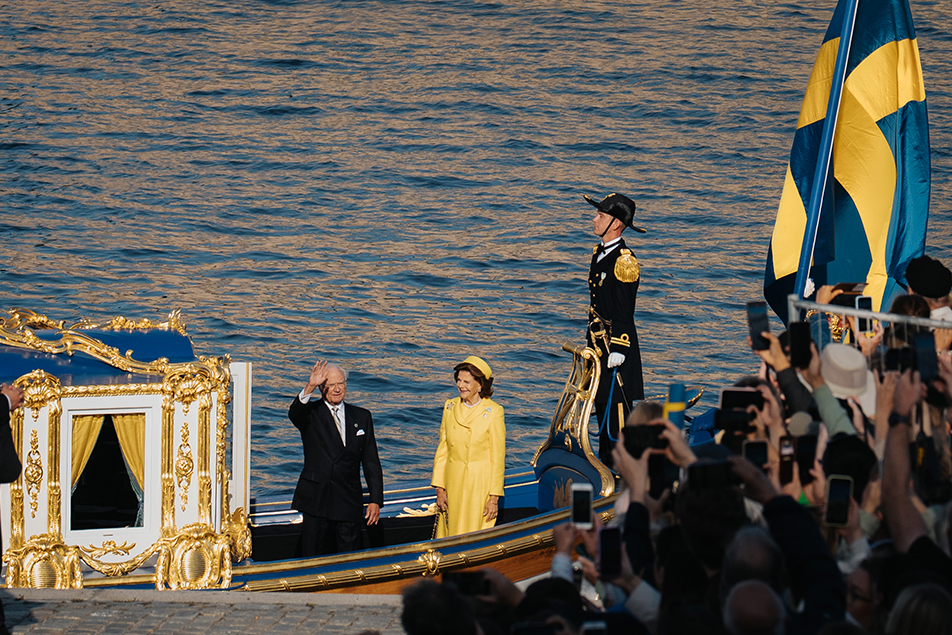
The King and Queen on board the Royal Barge Vasaorden. Photo: Clément Morin/The Royal Court of Sweden
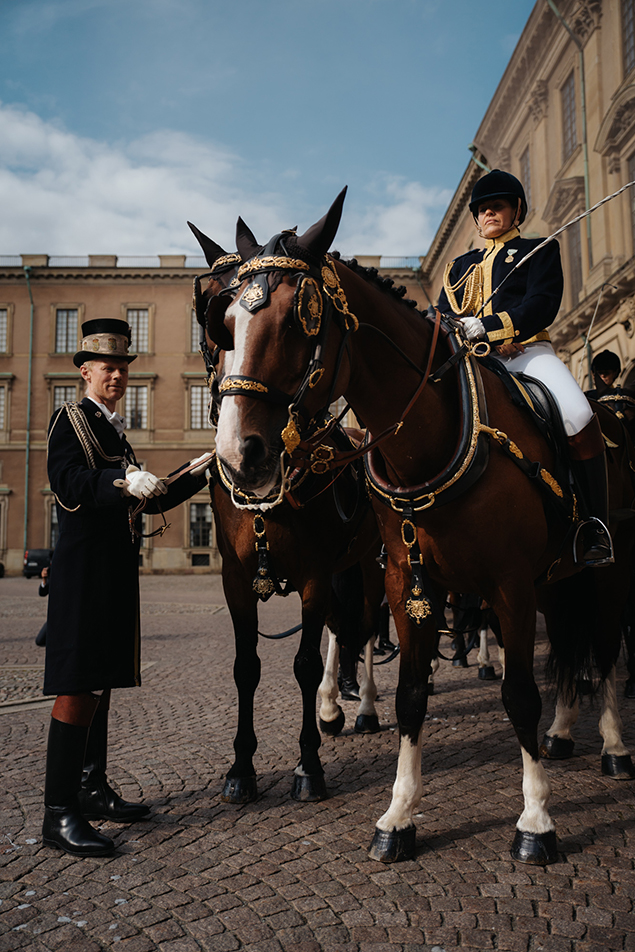
The horses from the Royal Stables are prepared for the cortège. Photo: Clément Morin/The Royal Court of Sweden
The horse-drawn cortège began at the Royal Palace, before travelling via Slottsbacken, Skeppsbron, Strömbron, Kungsträdgårdsgatan, Hamngatan, Sveavägen, Tegnérgatan, Birger Jarlsgatan and Nybroplan along Nybrokajen.
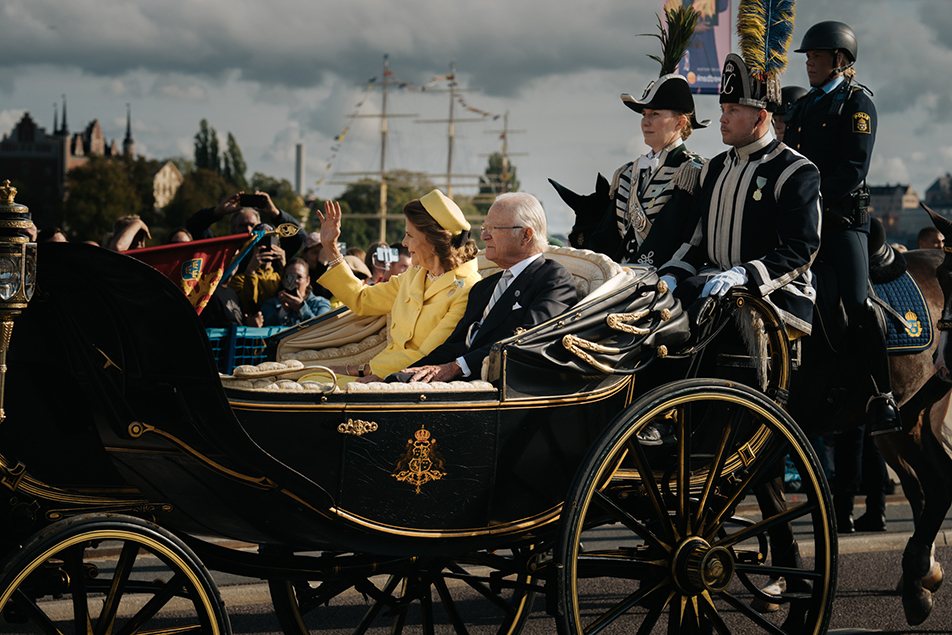
The King and Queen in the parade barouche on Skeppsbron. Photo: Clément Morin/The Royal Court of Sweden
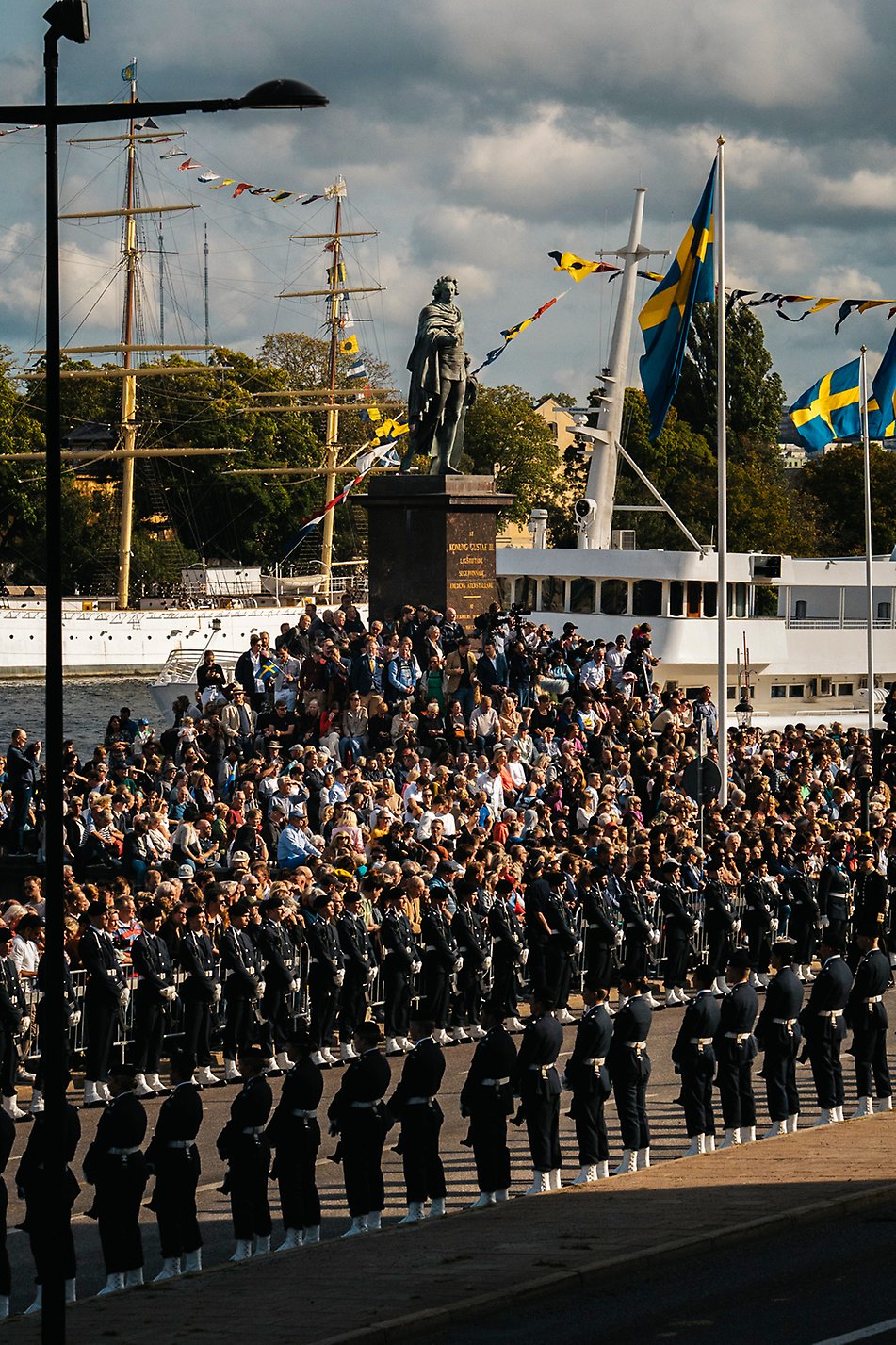
Many well-wishers watched the cortège from Skeppsbron. Photo: Clément Morin/The Royal Court of Sweden
The King and Queen travelled in a parade barouche with two outriders riding at the head of the cortège. On this special occasion, the parade barouche was drawn by six horses. Since the carriage has no driver's seat, the riders rode on the left-hand horses and held a hand-horse to the right. This is known as riding postilion.
The parade barouche is used on Sweden's National Day and on special occasions.
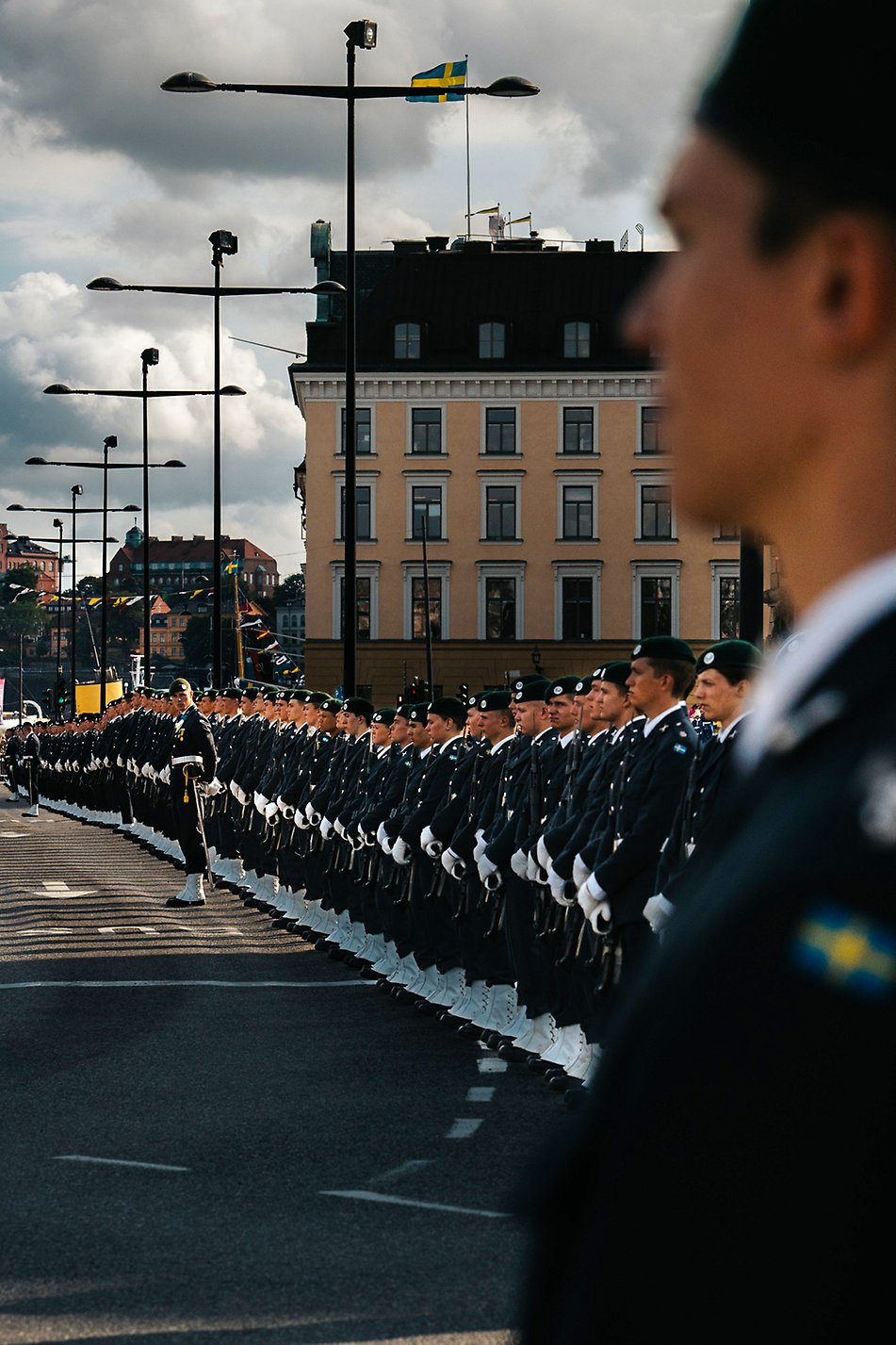
Thousands of soldiers paraded alongside the cortège route. Photo: Clément Morin/The Royal Court of Sweden
Around 3,000 soldiers and sailors from 24 units from the Army, the Navy and the Air Force paraded alongside the cortège route.
The Escort Squadron from the Life Guards Squadron rode in front of and behind the royal carriage, and military bands from the Swedish Armed Forces played along the route.
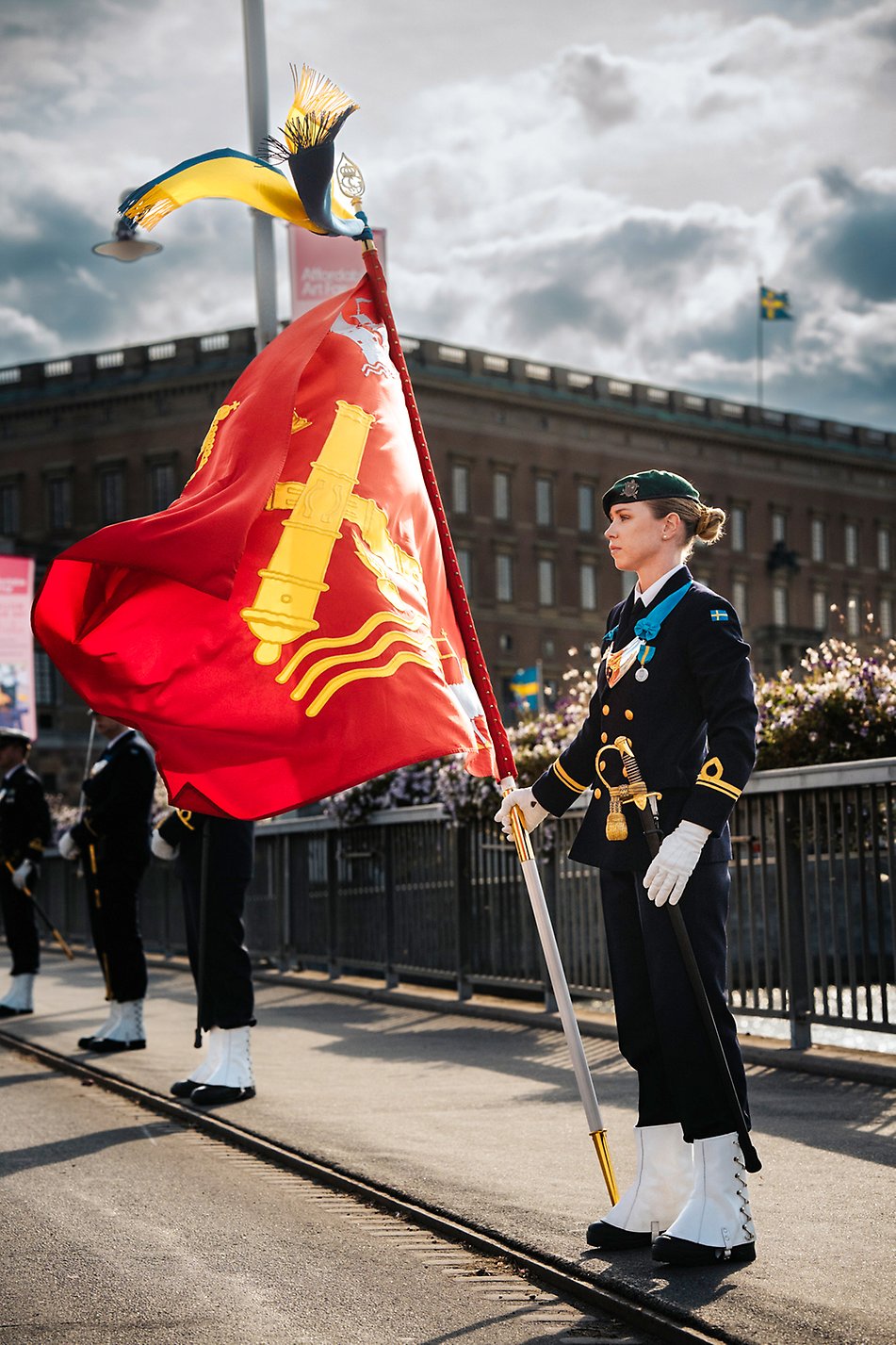
Standard bearers along the cortège route. Photo: Clément Morin/The Royal Court of Sweden
The Royal Stables' Daimler Limousine
From Hovslagargatan, The King and Queen were taken by car across Skeppsholmsbron Bridge and along Svensksundsvägen before boarding the Royal Barge Vasaorden at Östra Brobänken Quay.
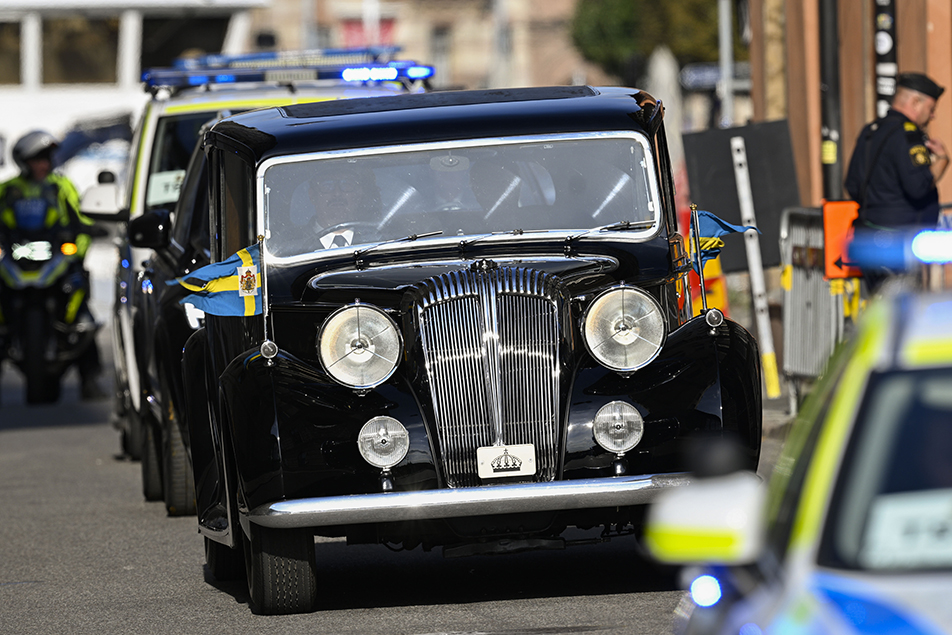
For part of the cortège route, The King and Queen were driven in the Royal Stables' 1950 Daimler Limousine. Photo: Anders Wiklund/TT
The car, which is the oldest at the Royal Stables, is a 1950 Daimler DE27 Limousine and has room for eight people. It was purchased by King Gustaf V, and has been used ever since.
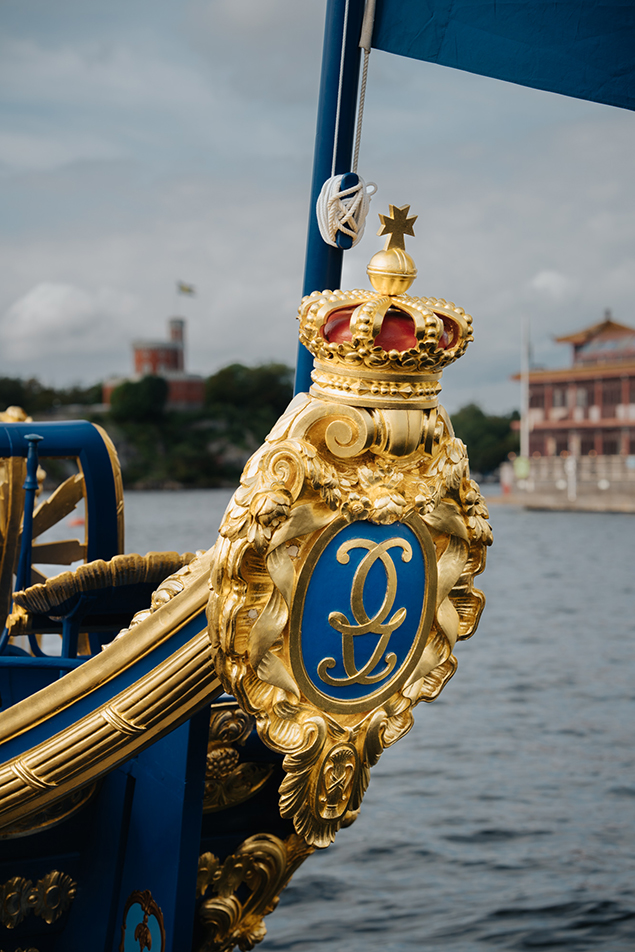
Detail of the Royal Barge Vasaorden. Photo: Clément Morin/The Royal Court of Sweden
The Royal Barge Vasaorden
The cortège ended with The King and Queen travelling on board the Royal Barge Vasaorden. The barge was rowed past Kastellholmen and across Stockholm Bay to the lower Logårdstrappan steps below the Royal Palace.
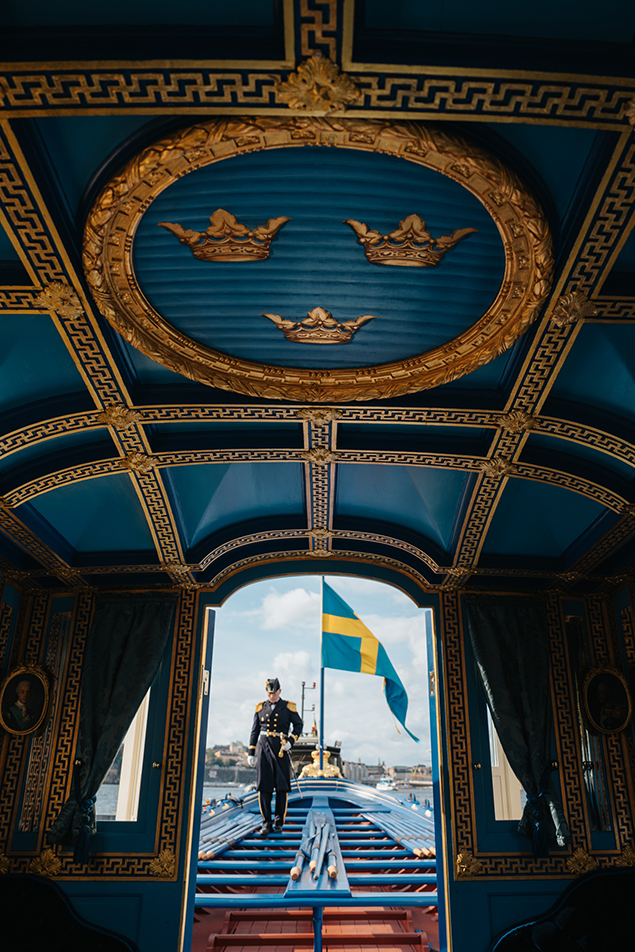
The interior of the Royal Barge Vasaorden. Photo: Clément Morin/The Royal Court of Sweden
The Royal Barge Vasaorden was crewed by officers, soldiers and sailors from Stockholm Amphibious Regiment, and by the Third and Fourth Naval Warfare Flotillas.
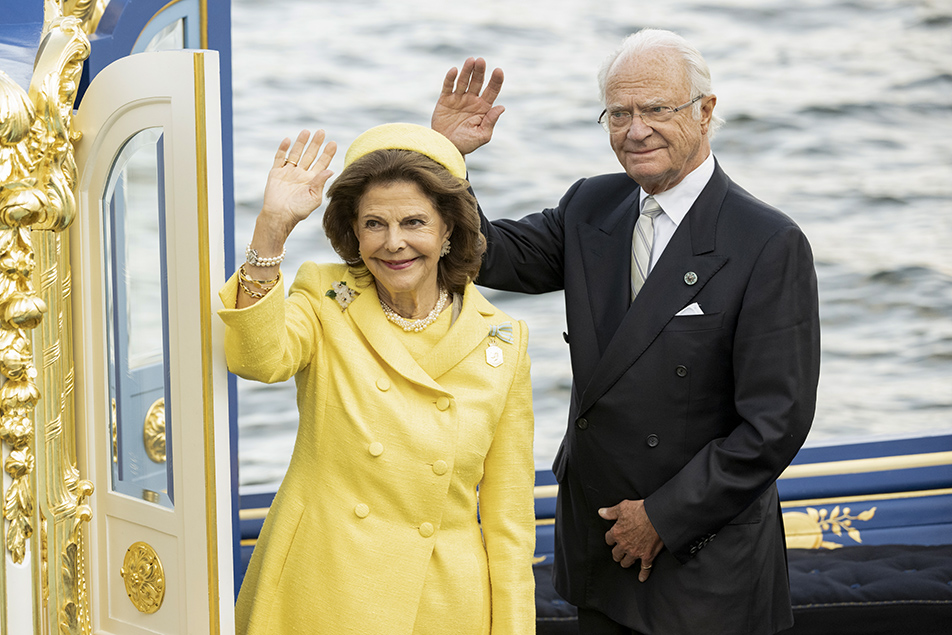
The King and Queen on board the Royal Barge Vasaorden. Photo: Henrik Montgomery/TT
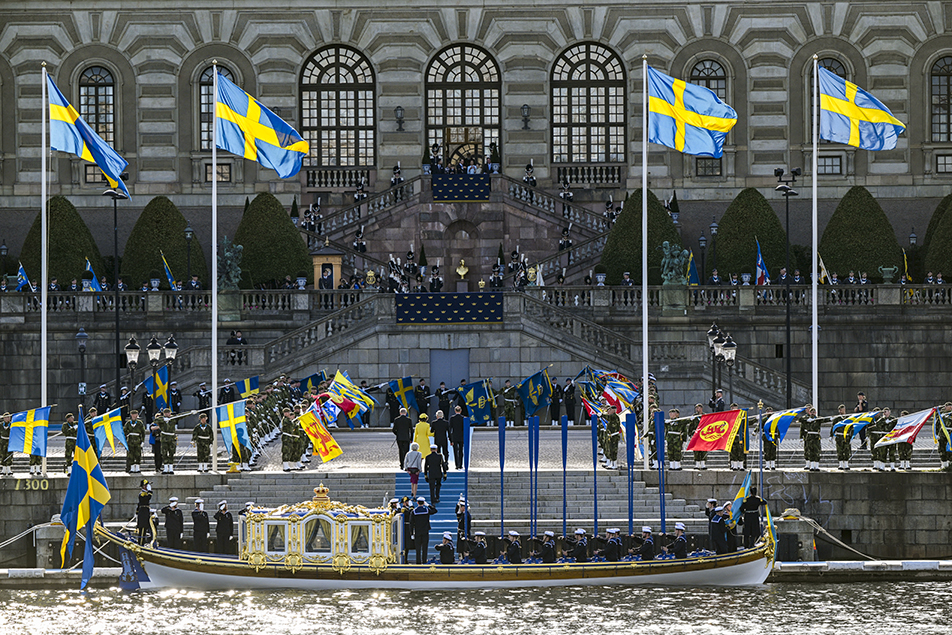
The King and Queen walked from the lower Logårdstrappan steps to the Royal Palace after travelling on board the Royal Barge Vasaorden. Photo: Anders Wiklund/TT
Massed standards consisting of 80 banners from the Swedish Armed Forces and four voluntary defence organisations welcomed The King and Queen when they disembarked below the Royal Palace.
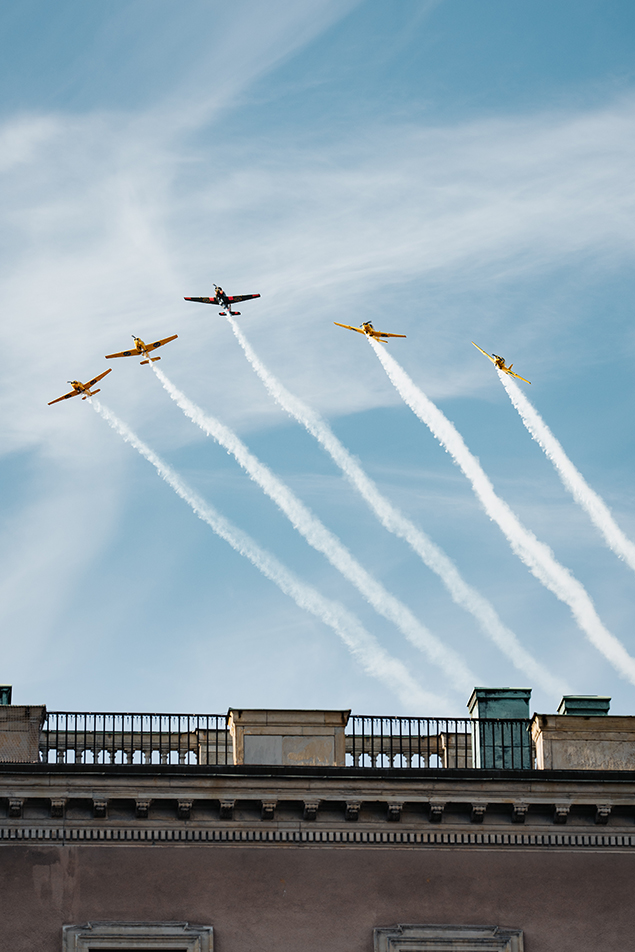
Flyover of propeller planes past the Royal Palace. Photo: Clément Morin/The Royal Court of Sweden
Flyover
Formation flyovers were carried out past the Royal Palace in honour of HM The King. First, six Safir propeller planes flew past. These were followed by jet aircraft from different eras: Tunnan, Lansen, Draken, Viggen and Gripen.
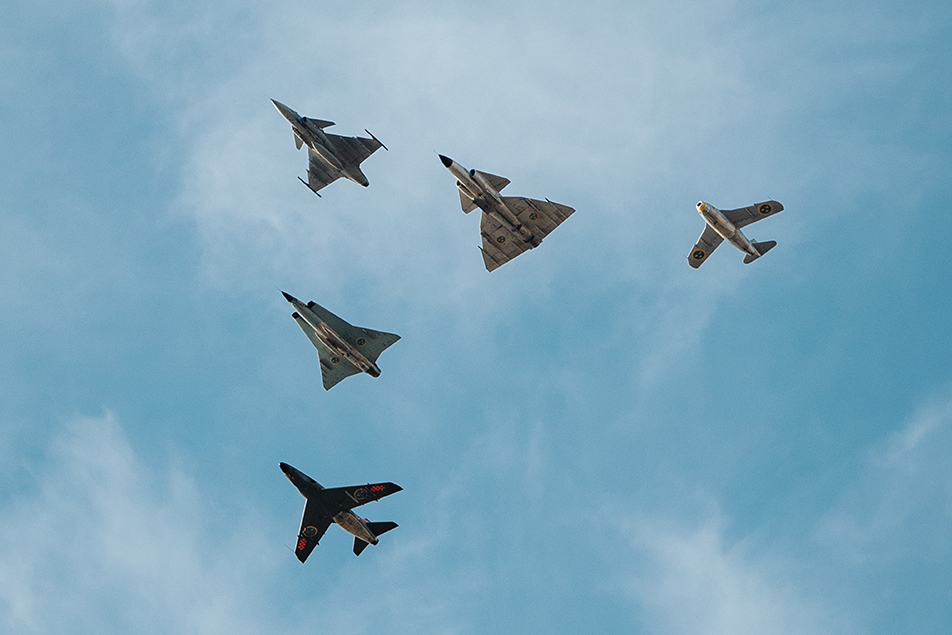
Flyover of jet aircraft from different eras. Photo: Clément Morin/The Royal Court of Sweden
The Royal Barge Vasaorden
The first Royal Barge was built in 1774 according to a design by Fredrik Henrik af Chapman. It was used for the first time for the arrival of the then Duchess Hedvig Elisabet Charlotta in Stockholm on 17 July 1774.
A new barge, Vasaorden, was built using the original drawings following a devastating fire on 8 August 1921. Parts of the old Vasaorden – including a complete set of oars that are still used today – were salvaged.
The new Vasaorden was first used to take King Gustaf V to the opening of Stockholm City Hall in 1923. It was also used for Princess Ingrid's wedding in 1935, King Gustaf V's 80th birthday in 1938, King Gustaf VI Adolf's 90th birthday in 1972, The King and Queen's wedding on 19 June 1976 and The Crown Princess Couple's wedding on 19 June 2010.
The Royal Barge Vasaorden was last used in connection with Stockholm City Hall's centenary on 22 June this year.
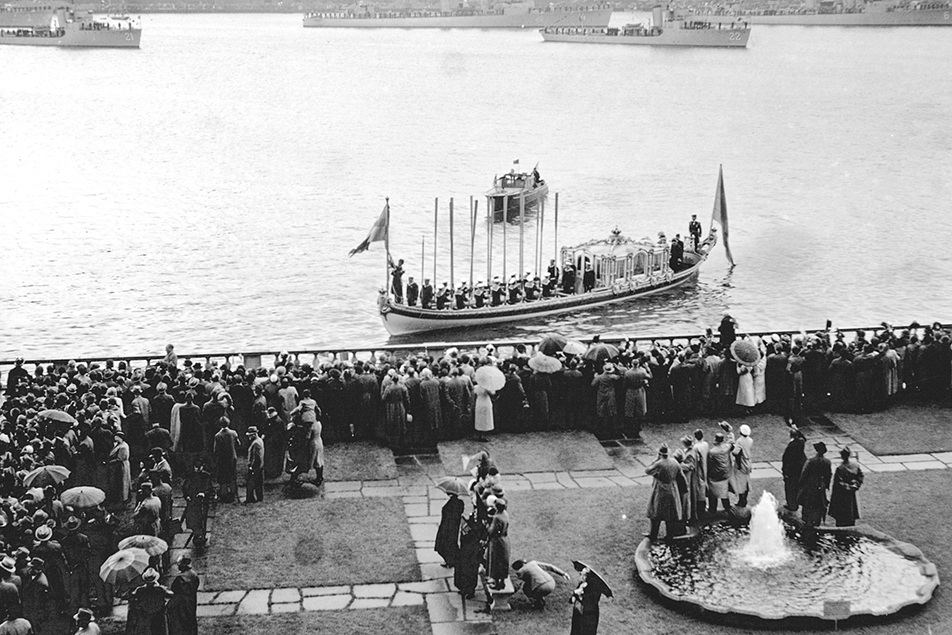
The opening of Stockholm City Hall in 1923. Photo from the Bernadotte Library

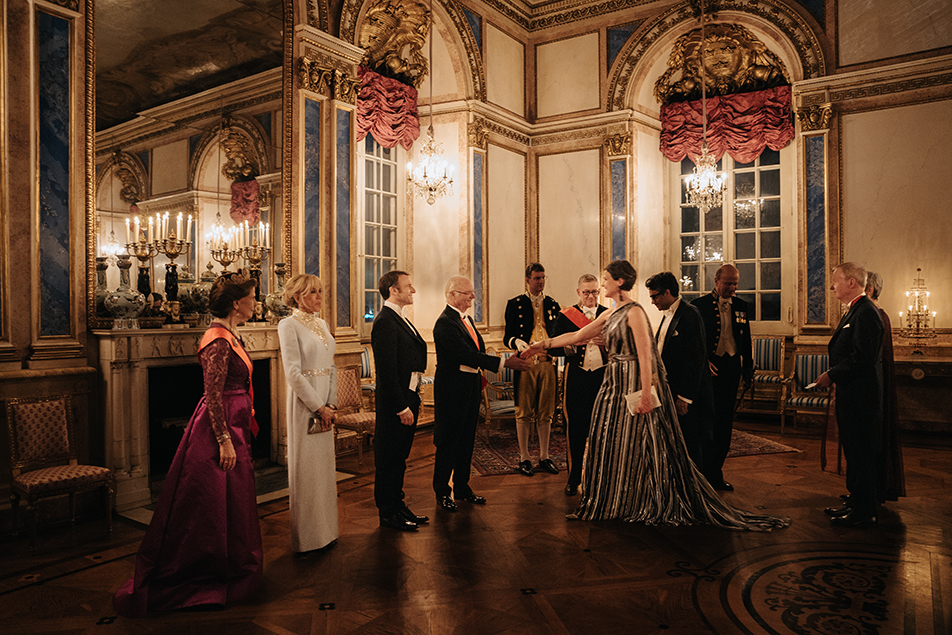
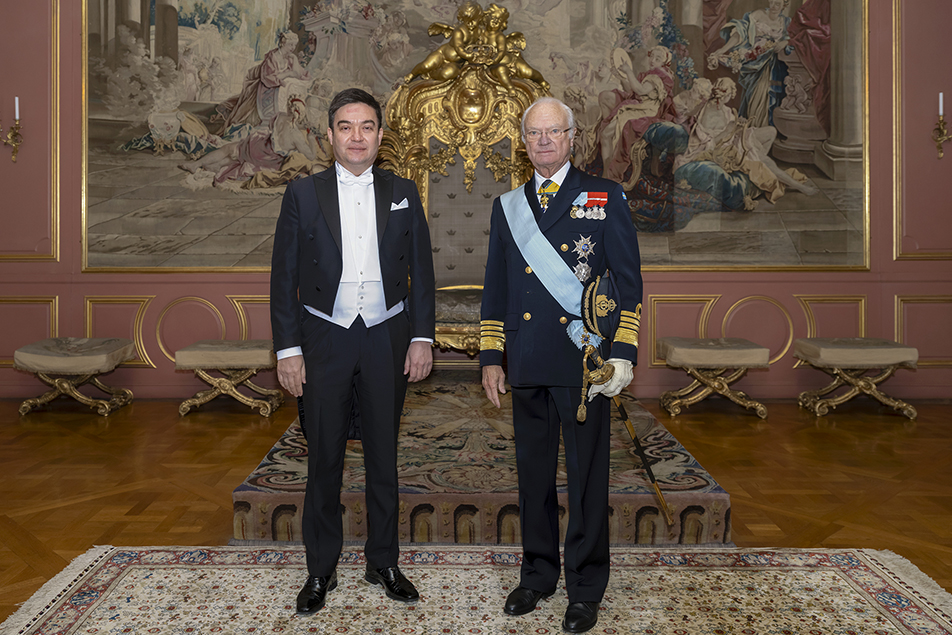
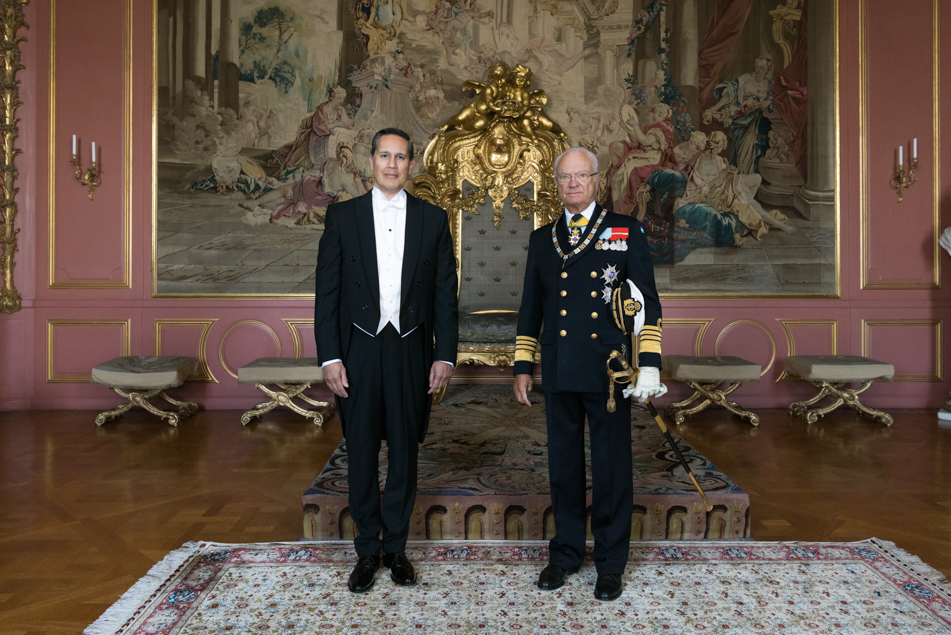
_Foto_Ingemar_LIndevall_KunglHovstaterna.jpg)
